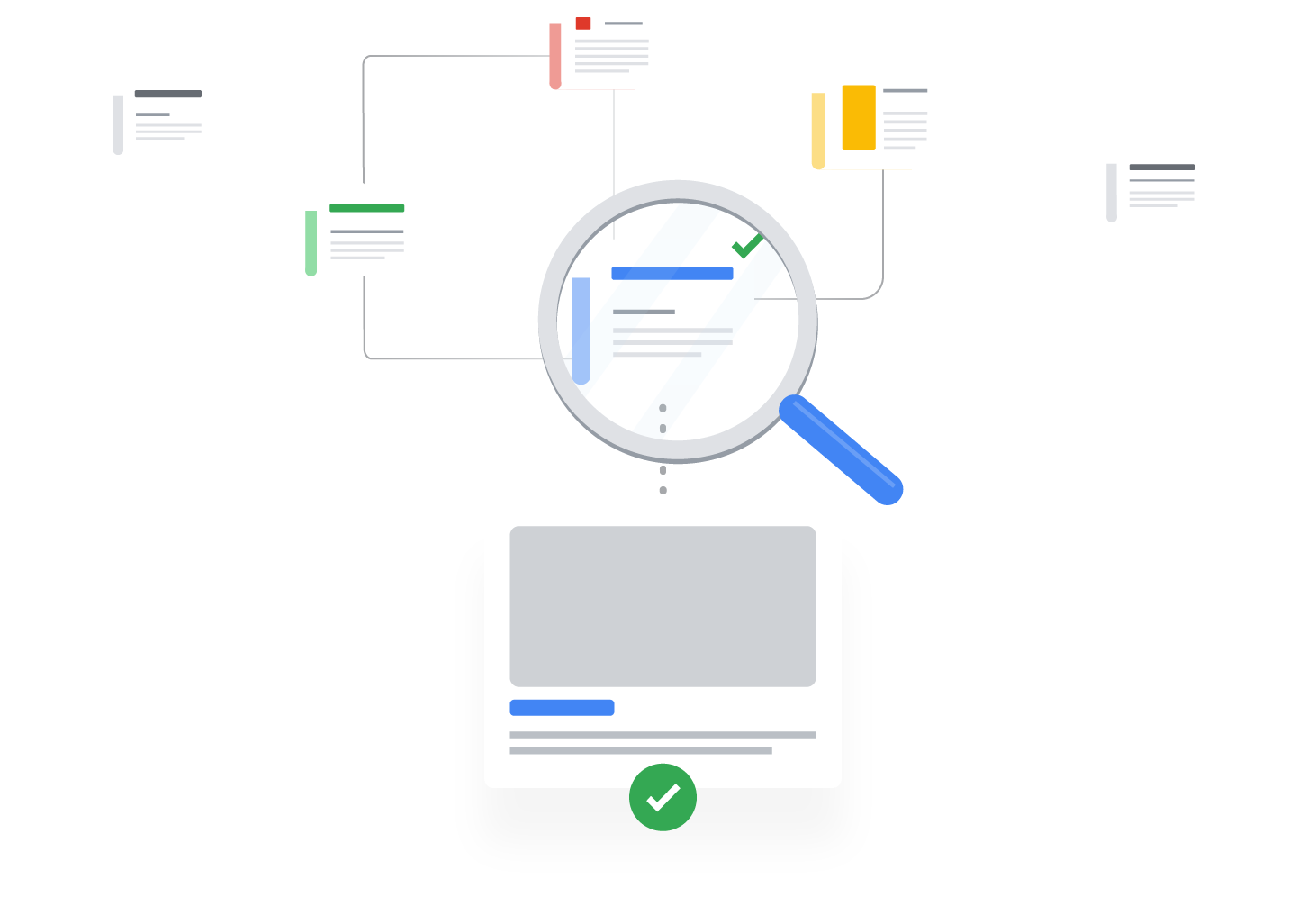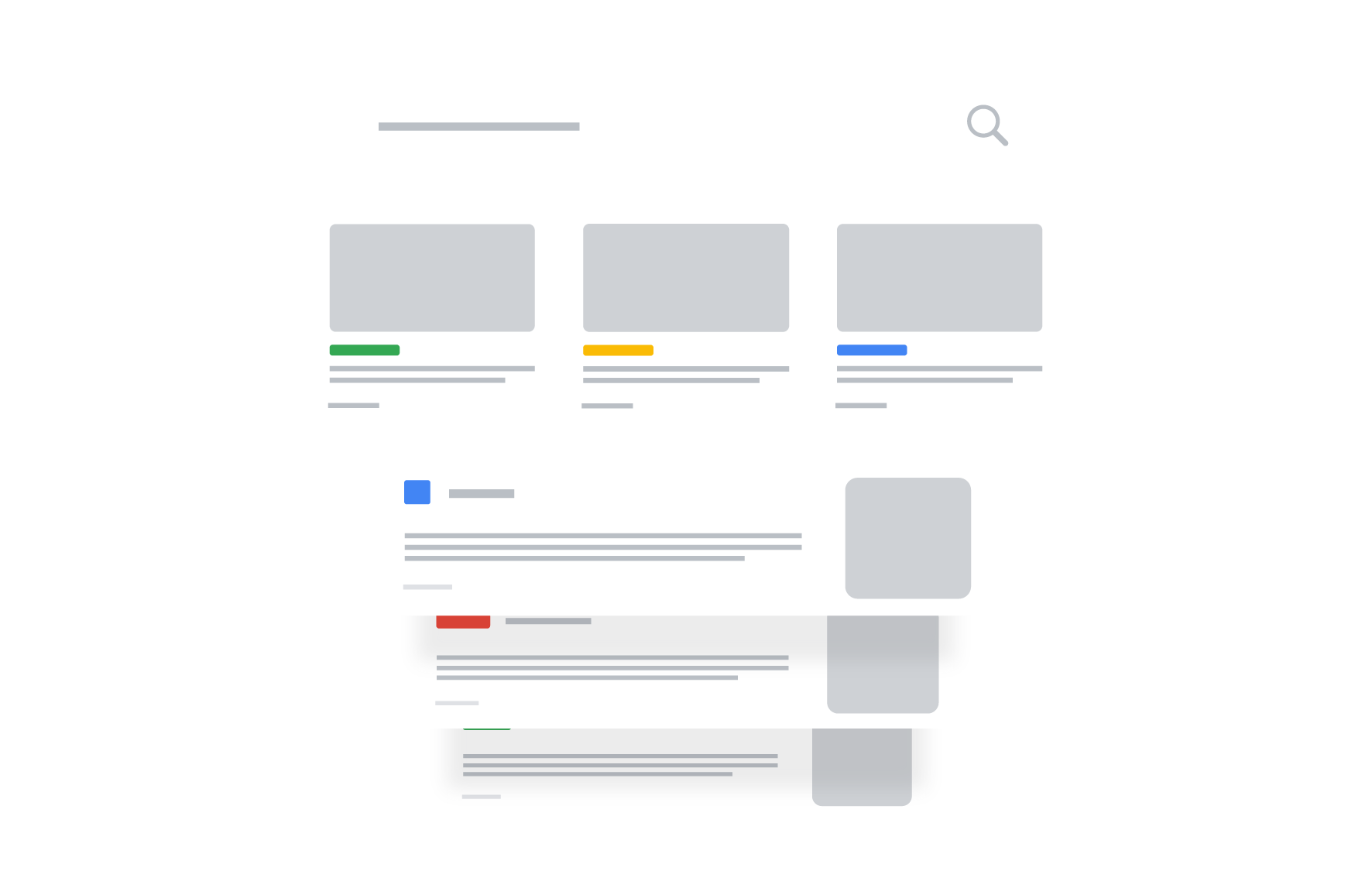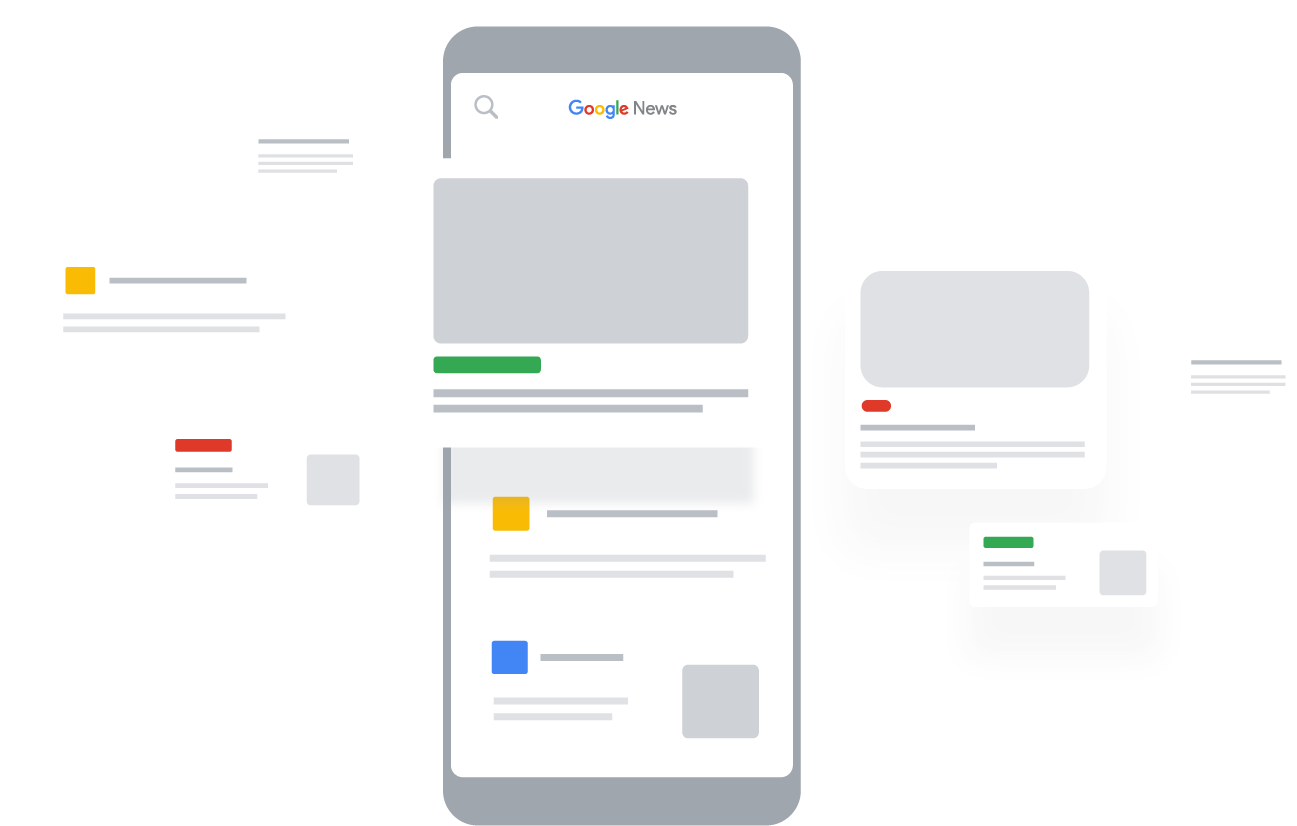Presenting news results in helpful ways
Top news, for everyone
How it works

Deep context and diverse perspectives
Search experiences
When you search for something on Google, you have access to information and perspectives from a broad range of publishers from across the web. If you search for a topic that’s in the news, your results may include “Top stories” which features news related to your search, and a link to additional related stories on the News tab. You can also search for news stories and see context and multiple perspectives in the results on news.google.com, news on the Assistant, and within the “Top News” section of search results on YouTube. These results are not personalized.
Our algorithms surface and organize specific stories and content based on factors like relevance to your query, prominence and freshness, and authoritativeness of the source. You can always refine your search terms to find additional information.

In-product experiences

News personalized for you
How it works
Google relies on two main ways to determine what news may be interesting to you. In the experiences mentioned above, you can specify the topics, locations, and sources you’re interested in, and you’ll be shown news results that relate to these selections. Additionally, depending on your activity settings, our algorithms may suggest content based on your past activity on Google products.
Algorithms rank content based on factors like relevance to your interests, the content’s prominence and freshness, and authoritativeness of the source. Google’s news algorithms do not attempt to personalize results based on the political beliefs of news sources or readers.

You can control what account activity is used to customize your news experiences, including adjusting what data is saved to your Google account, at myaccount.google.com. In some Google products, such as Google News and Discover, you can also follow topics of interest, follow or hide specific publishers, or tell us when you want to see similar articles more or less frequently.
Additional information about the news products that Google offers can be found here.